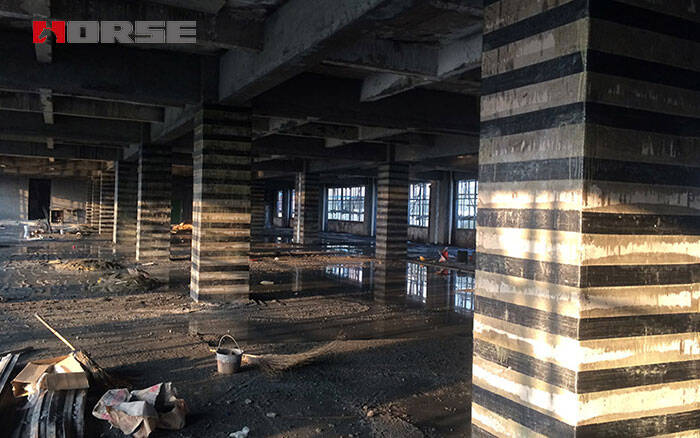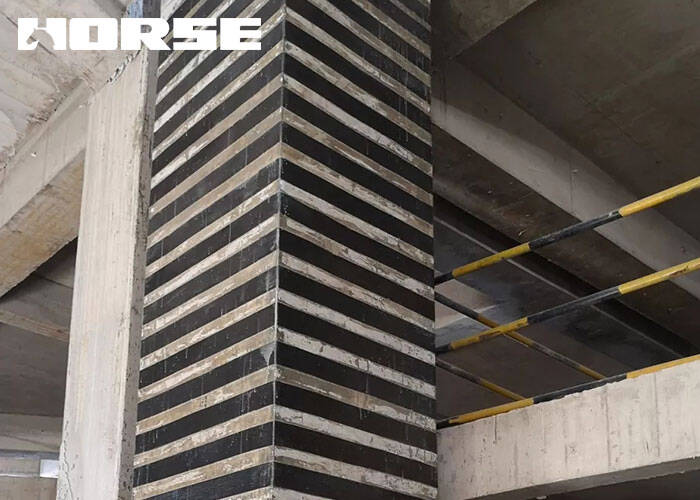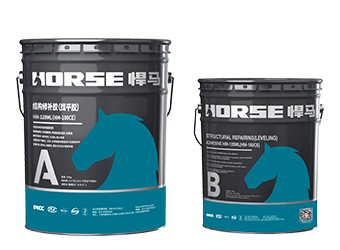Solutions
Horse Construction offers full range of structural strengthening materials with technical supports, documentation supports, products supports, project supports.
carbon fiber fabric , strengthening concrete members

The Wenchuan earthquake in 2008 and the Yushu earthquake in 2010 have caused an urgent need for earthquake reinforcement of bridges and buildings throughout China. A new type of advanced structural reinforcement technology that was just used at the time was to bond unidirectional carbon fiber fabric with epoxy resin to the exterior of structural concrete members. In the past 10 years, this method and technology of carbon fiber fabric reinforcement has been very mature in China.
Advantages of carbon fiber fabric reinforcement.
Carbon fiber has high tensile strength and is very lightweight. When bonded to the exterior of concrete columns, beams or slabs, it can increase considerable strength without increasing weight, and weight does not increase the load on foundations and other structural members. This composite material is called fiber reinforced plastic (FRP). FRP wrapping materials are easy to use and can be used for structural members of any size or shape. Compared with traditional reinforcement technology, it takes less time and cost.
The main reason for using carbon fiber strengthening technique is to increase the strength of the existing structure. In some cases, it may be used in a new structure, although it is usually only in response to some design or structural error. In proper applications, the cost of FRP reinforcement can be 30% to 50% cheaper than traditional reinforcement due to its ease of installation.
Main usage of carbon fiber concrete strengthening
Load increases:Increased live loads in warehouses; Increased traffic volumes on bridges; Installation of heavy machinery in industrial buildings; Vibrating structures; Changes of building utilization
Seismic strengthening: Column wrapping; Masonry walls;
Damage to structural parts: Aging of construction materials; Vehicle impact; Fire; Blast resistance
Change in structural system: Removal of walls or columns; Removal of slab sections for openings
Design or construction defects: Insufficient reinforcements: Insufficient structural depth.

There are many proprietary FRP reinforcement systems on the market, such as Horse's HM FRP system. Manufacturers of FRP reinforcement systems match fibers and resins to obtain the required strength increase. Among these FRP composites, carbon fiber is the preferred fiber, although other fibers are sometimes used-mainly glass, basalt or aramid (Kevlar). But as structural reinforcement materials, carbon fiber fabrics are more commonly used.
Carbon fiber concrete strengthening system installation
Applying FRP wrapping materials to structural concrete is not difficult, but it does require experience. So Horse has spent a lot of money to create a 3d construction process operation video. If you have no operating experience, you can learn from the video.
>>The treatment of concrete surface
The cosmetic layer, oil, dirt etc. Of concrete surface should be chiseled off and then rubbed off 1 ~2 mm thick surface layer with the angle grinder, concrete components should be handled by chamfering on the corner, dust was blew out with compressed air after the
completion Of polishing, and finally the surface was wiped by cotton cloth dipped in acetone, and kept dry for use. If the concrete needed to strengthen existed cracks, first choose HM-120M perfusion adhesive or HM-120L pouring crack adhesive to perfuse according
to the size of crack, and then strengthen.
>>Primer construction
When construction, two components of HM-180 primer were weighed according to the stipulated proportion of preparing glue, and dumped into a clean container and stirred to uniformity (when mixing, best mix along the same direction to avoid the air from forming air bubbles.) Brush or roller brush was used to evenly brush on the concrete surface, after the glue surface layer dried, it should be brushed several times depending on the particular circumstances, but the coating thickness did not exceed 0.4 mm, and it should not be missed out to brush, or have flowing or bubbles, waiting for glue curing (curing time was depended on the site temperature, it was appropriate when finger felt dry, generally not less than 2 hours), then the next process was proceeded. The glue prepared every time should be used up one time during the applicable period of the glue.
>>Leveling construction
The pores and defects on concrete surface were filled by HM-180CE leveling adhesive.When depression area was existed, the prepared leveling adhesive was used to repair and fill through scraper embedding and scraping, the position emerging altitude difference such as the joint of templates should be filled by leveling adhesive, which tried to minimize the height difference. The treatment of corner was that it was repaired to smooth arc through leveling adhesive, its radius was not more than 20mm. After the leveling adhesive cured (curing time was depended on the site temperature, it was appropriate when finger felt dry, generally not less than 2 hours), the next process should be proceeded further.
>>Paste of unidirectional carbon fiber wrap
HM-180C3P carbon fiber impregnated adhesive was smeared to the pasted area evenly,the corner site was more smeared appropriately. Paste after hauling unidirectional carbon fiber wrap tight and alignment, use a plastic scraper or roller (a paint roller that the villus was removed outside) to roll repeatedly along the same direction, until the glue compound exuded. And then smear impregnated adhesive to the outside surface of the carbon fiber wrap evenly, and roll repeatedly that the impregnated adhesive can immerse the carbon fiber wrap in two ways, if it is multi-paste, until your fingers touch dry, the next layer of paste can be beginner. If the carbon fiber wrap needs overlapping
>>Curing and conservation
Prevent rain or moisture 24 hours after the completion of construction, and pay attention to protection against a hard Object bumping into the surface of the construction. When the average air temperature is 20 , 25 ℃ , the curing time is not less than 3 days; when
the average air temperature is 10 ℃, the curing time is not less than 7 days.
You can find anything here you are in need of, have a trust trying on these products, you will find the big difference after that.

Good thixotropy carbon fiber leveling adhesive for concrete surface repairing

High strength, unidirectional carbon fiber fabric pre-saturated to form a carbon fiber reinforced polymer (CFRP) fabric used to strengthen structural concrete elements.

High strength, unidirectional carbon fiber sheet pre-saturated to form a carbon fiber reinforced polymer (CFRP) sheet used to strengthen structural concrete elements.